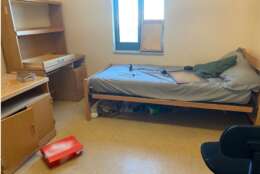On DoD
-
Service members at all 10 installations the Government Accountability Office visited said their living conditions were poor enough to take a toll on their mental health. Auditors found widespread problems like mold, nonexistent air conditioning, and concerns about crime because of broken locks, windows and security cameras.
September 28, 2023 -
In today's Federal Newscast: A State Department contractor has been arrested for allegedly sharing classified information with a foreign government. Cisco Systems is buying cybersecurity and data firm Splunk for $28 billion, in a cash deal. And the Air Force abruptly cancels a huge cybersecurity solicitation.
September 22, 2023 -
Shutdown countdown on your mind? Tired of congressional vilification? You might be thinking of how great a private sector job would be. Think twice. Many civilian public servants and military people do have great post-government careers. But the private sector offers no guarantees either, and a government or military career may not necessarily have prepared you for work outside of government.
September 21, 2023 -
The initial awards, worth $238 million, went to the future operators of eight “hubs” DoD is establishing as part of its Microelectronics Commons program.
September 21, 2023 -
The Navy Yard shooting was a "wake up call," in the words of one expert, for the government's security apparatus. Ten years later, ideas like continuous vetting have come to fruition.
September 18, 2023 -
The active duty Air Force will fall about 10% short of its recruiting goal this year, and its reserve components will see shortfalls closer to 30%.
September 15, 2023 -
In today's Federal Newscast: The Defense Department has adjusted childcare fees to give military families a financial boost. The Veterans Affairs Department is ready to spruce up its delivery of digital services. And the Energy Department allocates $39 million for nine new cyber projects at national labs.
September 14, 2023 -
The new concept, "Red Ventures," will help the NSA coordinate both internal ideas and work with outside partners on technology innovation.
September 13, 2023 -
An unclassified summary of DOD’s new cyber strategy offers few specifics as it outlines plans to protect the industrial base and improve technology used in cyber defense.
September 12, 2023 -
Five teams of senior leaders will examine everything from personnel and procurement policies to the Air Force's organizational chart. Their plans to move forward with reforms are due in January.
September 12, 2023 -
A new report from RAND Corporation reviewed two distinct technologies to illustrate ways the Air Force needs to align its goals with expense and risk in developing new space technology.
September 11, 2023 -
The Army's deputy chief of staff for intelligence says military leaders need to understand both the value of OSINT, as well as "how carefully it has to be managed and implemented."
September 11, 2023 -
The authors emphasized the challenges in assessing whether an AI-enabled system will work as it’s intended are not unique to the Air Force, and are common across federal agencies.
September 11, 2023 -
Lt. Gen. Robert Skinner, DISA’s director and commander of the Joint Force Headquarters-Department of Defense Information Network (JTF-DoDIN), said the agency is undertaking three separate tests of tools to better protect internet boundaries.
September 08, 2023 -
The detailed work in Congress is done not by members, but rather by the 30,000-odd staff members. Right now, a group of overworked, and probably underpaid, minions are what they call "conferencing" over one of the most important yearly laws: the National Defense Authorization Act.
September 06, 2023















